Some studies tell us that people who eat fish live longer and enjoy healthier lives, with lower risk for chronic diseases that impact much of the Western world. For instance, the ongoing Adventist Health Study has so far found that vegetarians outlive omnivores, vegans outlive vegetarians, and pescatarians – people who avoid all animal products except for fish – appear to have the longest life expectancy of all.
Meanwhile, in a 2019 review of 44 studies that was published in the highly specialized medical journal PLEFA (“Prostaglandins, Leukotrienes & Essential Fatty Acids” isn’t what most people would call light reading), researchers concluded that children of mothers who ate seafood weekly had significantly higher verbal I.Q. scores. The review also concluded that children who ate seafood had better school grades, and higher I.Q. by as much as 9.5 points when compared to their peers who ate no fish.
Why are we seeing these benefits? Is it because fish is high in the long chain omega 3 fatty acids, EPA and DHA, and these are beneficial for brain and cardiovascular health? Is it because fish-eaters are generally eating less red meat, or less processed foods – and these are the real culprits in ill-health? Do fish-eaters tend to get more exercise? Are they less likely to smoke? Do they live healthier lifestyles, in general?
Research is ongoing, and the data isn’t necessarily conclusive. However, there is a large body of evidence that for most people, at least compared to the Standard American Diet, fish consumption may be linked to positive health outcomes.
What You Need to Know About Eating Fish
But before you run out to chow down on a fish burger, or buy a bunch of stock in the nearest fishing fleet, there’s something you should know.
Fish are killed, of course. And for ethical vegetarians, that’s reason enough to steer clear. It’s true that some scientists say that fish do not have the neuro-physiological capacity for a conscious awareness of pain, and do not feel pain the way humans do. But others say that it is impossible to definitively know whether another creature’s subjective experience is like our own. What’s certain is that in recent years, fish biologists around the world have discovered substantial evidence that, just like mammals and birds, fish also experience conscious pain. It is now widely accepted that fish produce the same opioids—the body’s innate painkillers—that mammals do.
And there are some other issues, too. Wild fish swim in polluted waters and exist at the top of very long food chains. As a result, many wild fish today are contaminated with dangerous levels of mercury, polychlorinated biphenyls (PCBs), and other toxins. And industrialized fishing operations are practically strip-mining the oceans, leaving fish stocks depleted, eviscerating marine food chains, and threatening the viability of the commercial fishing industry for future generations.
What about fish farms? They have some big, big problems, too. So, more people are wondering what it is about seafood that seems beneficial — and whether there are any better ways to derive the benefits without devastating our oceans or exposing consumers to dangerous levels of pollution.
Types of Fishing
When we think of fishing, we conjure up images of intrepid fishermen in yellow oilskin jackets bravely sailing out of the harbor, enduring lashing rain and fierce winds, and returning at the end of the day with a fresh catch. That romantic vision has nothing to do with how fish are caught these days. The modern fishing industry relies on two methods for the vast majority of its product: trawling in oceans and seas, and farming in human-made lakes and tanks.
Wild-Caught Fish
Fish labeled as “wild-caught” come from the ocean through commercial fishing methods. There are several huge problems with wild-caught fish.
Overfishing
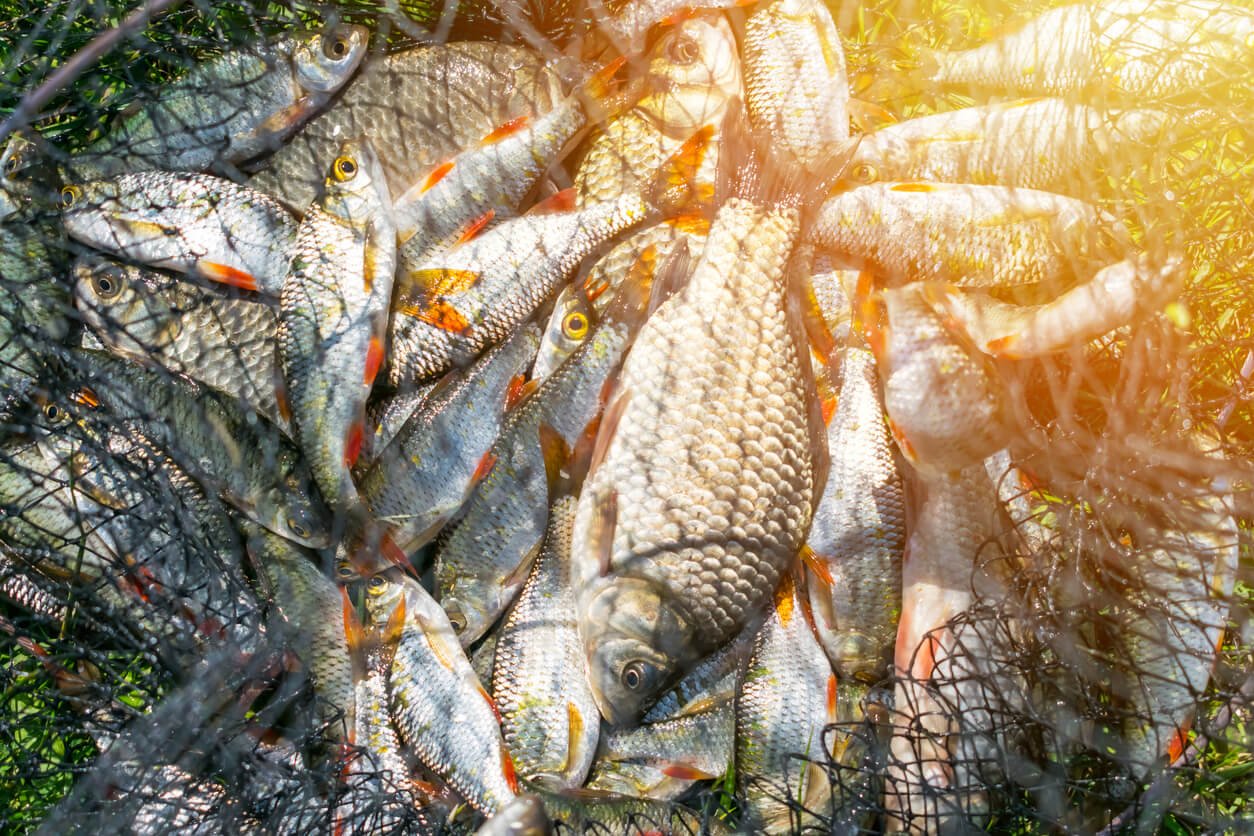
Overfishing is exactly what it sounds like. We’re pulling more fish out of the ocean than the natural ecosystem can replenish, creating an unsustainable system that has put certain species on the edge of extinction. Overfishing has been a problem since at least the early 1800s, when the whale population was severely affected by humans looking for blubber to use in lamp oil.
Commercial fishing industries are actually harvesting over 160 billion pounds of sea life out of the ocean every year — that’s nearly half of a billion pounds every single day. And if fishing rates continue apace, nearly all of the world’s fisheries will collapse in the next 30 years.
One obvious outcome of this collapse is, no more fish for us. We’ll regale our grandchildren with unbelievable tales of shelves loaded with cans of wild-caught salmon, and how even poor kids could get a tuna sandwich for lunch from time to time.
We don’t know exactly how the removal of entire species from the web of ocean life will affect the rest of the food chain and ecosystem, but various models make it clear that we can expect devastation that will lead to dead zones and impaired human health. As biodiversity in the ocean declines, that leaves more room for invasive species to colonize coastlines and further destabilize ecosystems. As algae-eating fish go extinct, algal blooms can pollute water and contribute to epidemics of disease in humans (and other species, too!).
While commercial fishing produces the vast majority of the fish we eat, there are plenty of places where old-style fishing cultures are still catching enough for subsistence and a local economy. These cultures are being devastated by the die-off of their preferred seafood sources due to overfishing.
Bycatch
Commercial fishing nets – also called trawling nets – are no joke. They can be up to two miles long and around the size of a football field at their opening. Do you think a net that large will only catch the salmon, shrimp, or tuna that commercial fishers set out to catch? Certainly not. Approximately 40% of global commercial catch is actually not the intended species. This 40% is called bycatch and can include species like dolphins, sharks, whales, sea turtles, and anything else that happens to be swimming through at the time of the catch.
Besides being incredibly sad, bycatch causes other problems. It leads to more overfishing, slowing down the recovery time for exploited and overexploited species. It kills already endangered species like sea turtles and seabirds. They may be caught in the nets and killed, or they could become entangled in netting debris, carrying around pieces that are disfiguring and can even drown or starve them. Bycatch is also extremely wasteful, both physically and financially. Even fisheries that are certified sustainable have been found to toss a large percentage of their catches overboard.
Destruction of Ocean Ecosystems
Millions of ocean species cannot be killed without also causing disruption to the ocean itself. Any dead carcasses thrown overboard can attract scavenging species and cause a disruption in the ocean’s nutrient balance.
Plastic Pollution
Netting debris often gets caught in the physical ocean environment, like the seabed, coral reefs, and sponges. A 2019 Greenpeace report found that the biggest source of plastic pollution in our planet’s oceans comes from fishing. More than 640,000 tons of lost or abandoned fishing gear finds its way into the ocean every year. Just to give you an alarming visual, that’s the weight equivalent of about 210,000 Hummer 2 SUVs, or a new Hummer hitting the water every two and a half minutes, all year long.
This “ghost gear,” as it is known, kills hundreds of giant sea turtles annually, and can compromise whales’ ability to filter water as they feed. Pollution can also suffocate seabirds, crustaceans, and small fish.
Farm-Raised Fish
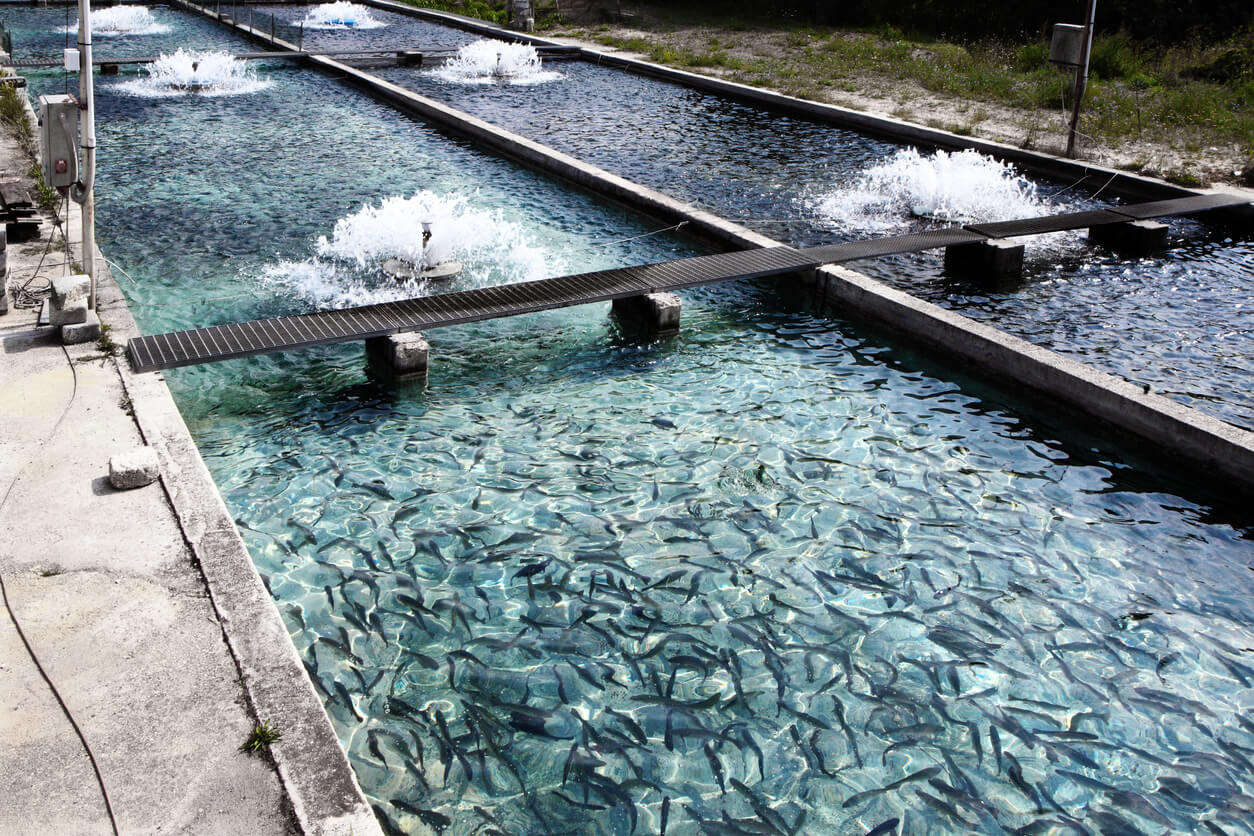
Spurred on by the depletion of the oceans and the stocks of fish that swim in them, an ever-growing share of the world’s fish is being produced in fish farms. In fact, over half the world’s fish harvest now comes from aquaculture. Unfortunately, this isn’t great for the oceans, either.
Farm-raised fish contribute a significant amount of pollution and disease. The largest source is the waste that fish produce, as well as uneaten food that sinks to the bottom of the pens and contaminates the water. Chemicals like pesticides, antibiotics, disinfectants, and anti-corrosives are widely used in fish farming to try to prevent the spread of diseases. However, these chemicals contaminate the water, the fish themselves, and the equipment.
And in a spectacle remarkably similar to factory farming of cows and pigs, fish are given routine doses of antibiotics simply to keep them alive under miserable conditions. The overuse of antibiotics in these environments poses a significant public health risk, increasing the likelihood of antibiotic-resistant bacteria entering our food system. Farm-raised fish are also contaminated by the cancer-causing chemicals known as PCBs, which may be found in farm-raised salmon at 16 times the concentration found in wild-caught salmon.
Most farm-raised fish are also problematic nutritionally. Fish raised in these environments have been found to promote inflammation due to their higher ratio of omega-6 to omega-3 fatty acids. Additionally, they may have up to 20% less protein than fish that come from the ocean.
You may have noticed a color difference between farm-raised and wild-caught salmon. Because fish raised on farms don’t have access to things in the ocean that would naturally give them their carotenoid-rich pink pigmentation — like crustaceans and algae — most salmon farmers add pigmenting compounds like astaxanthin to their salmon feed to enhance the coloring that consumers want. These chemical dyes that turn otherwise grey fish into a rich reddish hue are actually the most expensive part of farm-raised salmon feed.
Farm-raised fish are far from sustainable, which can be seen in the feed conversion ratio it takes to produce them. For every pound of salmon, 2-3 pounds of fish chow are needed. This chow is usually made from other fish, like mackerel, anchovies, or sardines. Some of the species used to make farm-raised fish chow are threatened, and their role as an input in the production of other fish accelerates their own extinction. Some fish farms also feed their fish GMO soybeans and waste byproducts from factory-farmed livestock.
Genetically Engineered Fish
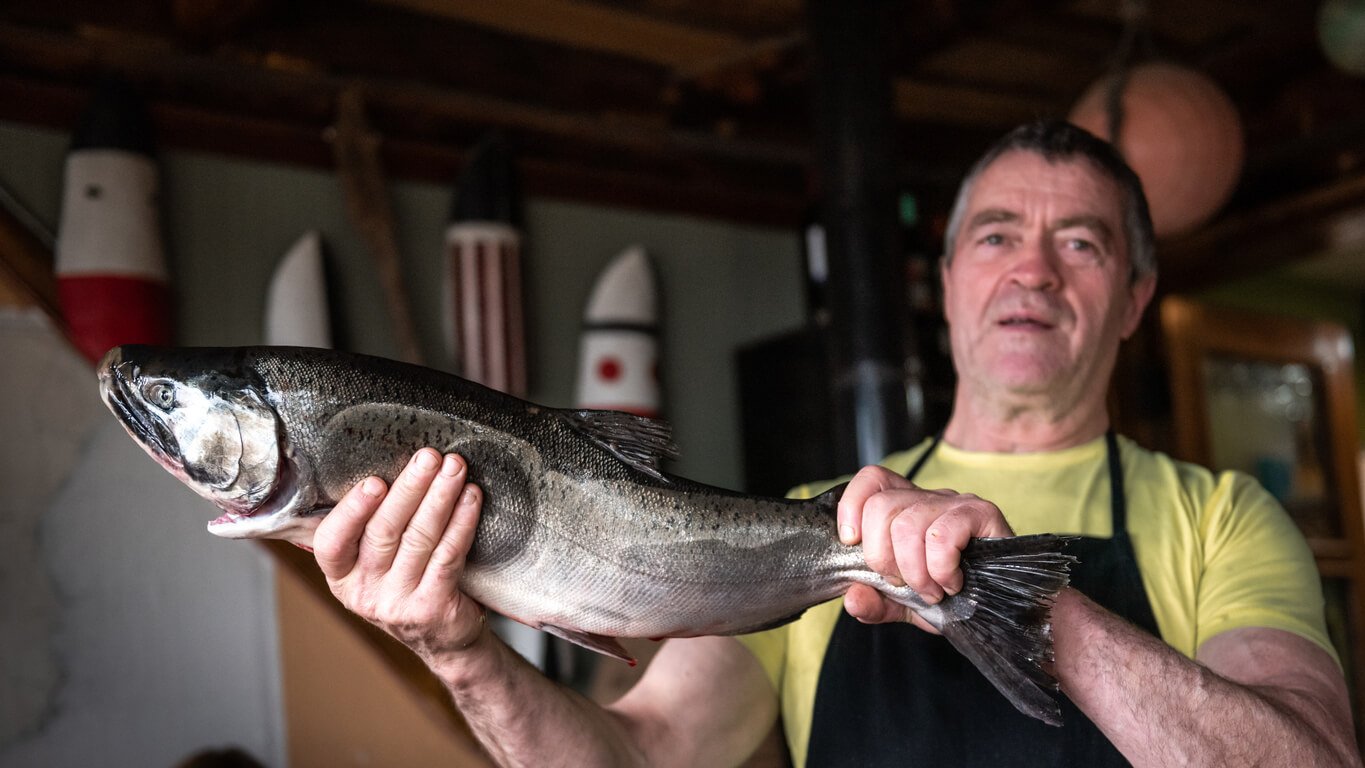
Another concern in the fish farming industry is genetically engineered (GE) fish. At least 35 species of fish are currently being genetically engineered around the world. Some of these include trout, flounder, catfish, salmon, tilapia, and striped bass.
What does this mean? Many GE fish have been engineered to have a gene for growth hormones, which speeds up maturation and results in a fish getting bigger, faster. The economic benefit of doing this is that more fish, and larger fish, will be available to consumers faster. Other GE fish have been “improved” to be more tolerant to varying temperatures, resistant to diseases, and even to have larger muscles. The genes being used are often sourced from bacteria, mice, and other fish.
In November of 2015, AquaBounty Technologies produced a GE fish called the AquAdvantage Salmon, which grows twice as fast as regular salmon. The FDA approval for consumption caused quite an uproar from consumers, members of Congress, environmental groups, chefs, and restaurant owners.
What’s the big deal? For starters, the environmental dangers are significant, with great concern regarding what could happen to wild salmon populations if these GE fish escaped into the wild. In short, they could cross-breed. And with the competitive advantage of rapid growth, they could take over, and effectively eliminate wild non-GE salmon stocks in short order. As for human health impacts, these remain unknown since there haven’t been any studies conducted. But we do know that GE salmon are more susceptible to disease, and tend to receive larger amounts of antibiotics than other farm-raised fish.
Can Fish Be Farmed Sustainably?
Since our oceans are increasingly depleted and human appetite for fish has been on the rise, the question naturally emerges: Can fish be farmed safely and sustainably?
With farm-raised fish production outpacing that of wild-caught fish and of global beef, the good news is that a rapidly growing conversation around sustainability in this industry has surfaced. The goal of more sustainable fish farms is to raise healthy fish that don’t damage local ecosystems. More sustainable farms steer clear of additives, chemicals, hormones, and antibiotics, and for fish like Tilapia, they use fish feed that is mostly or entirely vegetarian.
More sustainable fish farms are vigilant about monitoring the quality of the water and ensuring that they don’t produce levels of pollution that harm local ecosystems or native wild fish. Some are in the deep open ocean, where the water is more pristine, and currents are strong and steady enough to continually flush the farms of fish waste and pests such as sea lice. Others are placed in zero-waste closed-loop systems based on land.
While practices like these can be a big step forward, the reality is that there is stunningly little government oversight of the aquaculture industry, and claims of “sustainable” may or may not mean anything. So if you wish to partake, here are a couple of labels that might mean something:
The Global Aquaculture Alliance developed the voluntary Best Aquaculture Practices Certification. The standards address environmental and social responsibility, animal welfare, food safety and traceability.
The Aquaculture Stewardship Council, founded by the World Wildlife Fund and the Dutch Sustainable Trade Initiative, certifies responsibly farmed seafood and manages global standards for sustainable aquaculture. It doesn’t represent the most stringent of standards, but it’s a meaningful step in the right direction.
And probably the single best “one-stop shop” resource for reviewing the sustainability of different fish is Monterey Bay Aquarium’s Seafood Watch, linked here.
However, even if aquaculture were to evolve to become a model of sustainability in the future, fish eaters would still be left with another concerning problem…
Contaminants in Fish
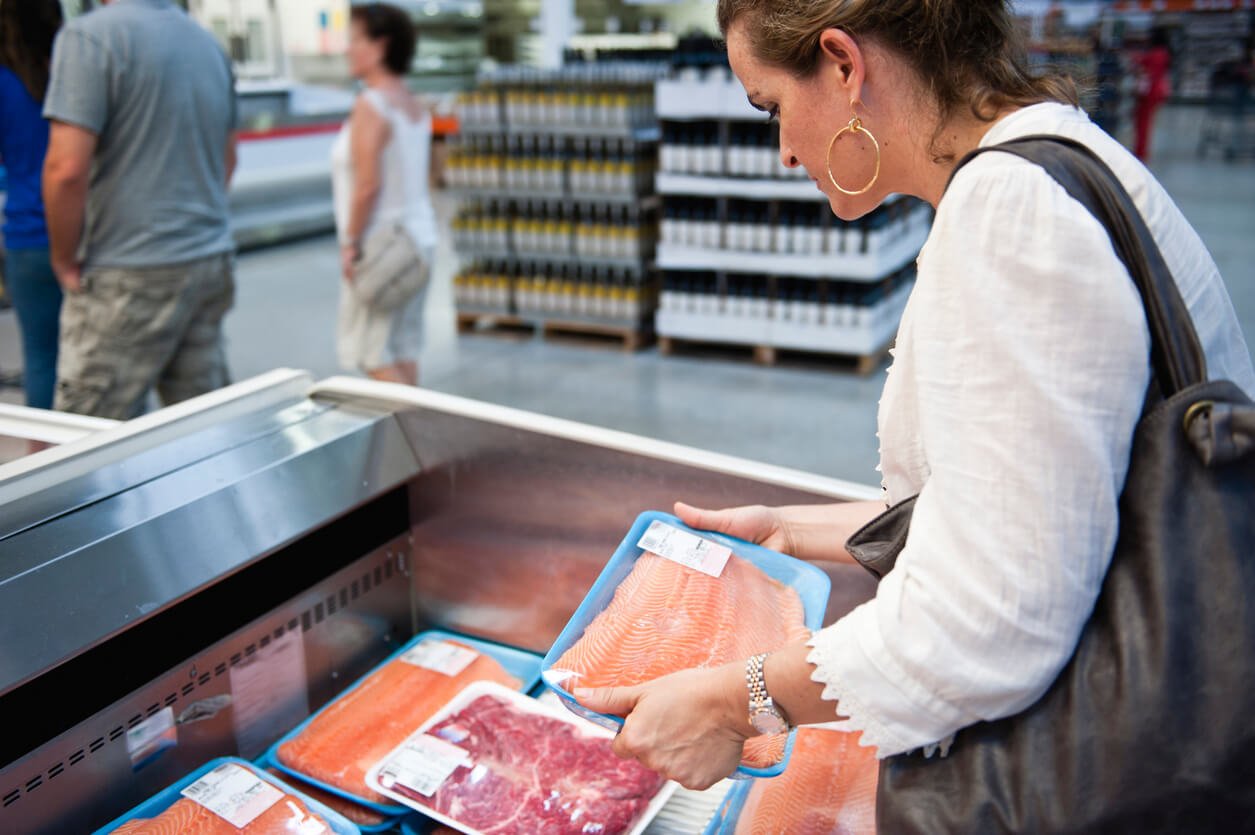
Fish tissue tends to be fatty, and most environmental contaminants are fat-soluble. Compounding this problem is the fact that bigger fish eat smaller fish, so the contaminants get more concentrated the higher the food chain we go. And a lot of the fish we love to eat are pretty high on that food chain. You can’t see the contaminants, so you never know what — or how much — of something harmful could be lurking in the fish you buy. What are some of the most common contaminants in fish, and where do they come from?
Nearly all fish contain at least trace amounts of mercury, and some contain a significant amount. Mercury is a toxic metal. It can cause neurological and chromosomal problems and harm unborn babies if they are exposed during pregnancy. Certain species tend to contain more mercury than others, largely due to their predatory position in the aquatic food chain. For this reason, many experts advise avoiding the consumption of shark, swordfish, tilefish, and king mackerel, as these fish tend to eat much smaller fish, which contributes to their mercury load. Albacore, yellowfin, and bigeye tuna are also very high in mercury.
And even those fish that are lower in mercury still contain some. This is why pregnant women are advised to avoid many types of fish, to prevent harm to their fetuses.
Polychlorinated biphenyls (PCBs) are toxic man-made industrial compounds that can build up in the fatty tissue of fish. Unfortunately, even though the use of PCBs has been banned in many places, they tend to stick around in the environment for a long time. The EPA considers fish a persistent source of PCBs in the human diet. Consuming PCBs can have lasting neurological, endocrine, circulatory, digestive, and central nervous system effects. Some states have told people to limit their consumption of all fish and shellfish from freshwater or coastal areas nearby due to the high risk for PCB contamination. Research has shown that PCBs can cause birth defects, smaller birth weight, and delayed learning among infants, and older adults can experience reduced memory and learning.
Dioxins are cancer-causing industrial pollutants and have been called some of the most toxic chemicals known to science. They’re also known to be harmful to reproduction and human development. Unfortunately, fish are a major source of dioxins in the human diet. Similarly to mercury, dioxin tends to accumulate in larger fish up the food chain. In fact, dioxin levels in fish can be 100,000 times that of the water around them.
Pesticide residues from factory farms can also end up in the fish you eat through the waterways that run into the ocean.
And lastly, plastics from landfills can end up in the water, be eaten by the fish, and ultimately end up in your body. Research has shown that plastics can linger throughout generations of fish.
What You Can Do
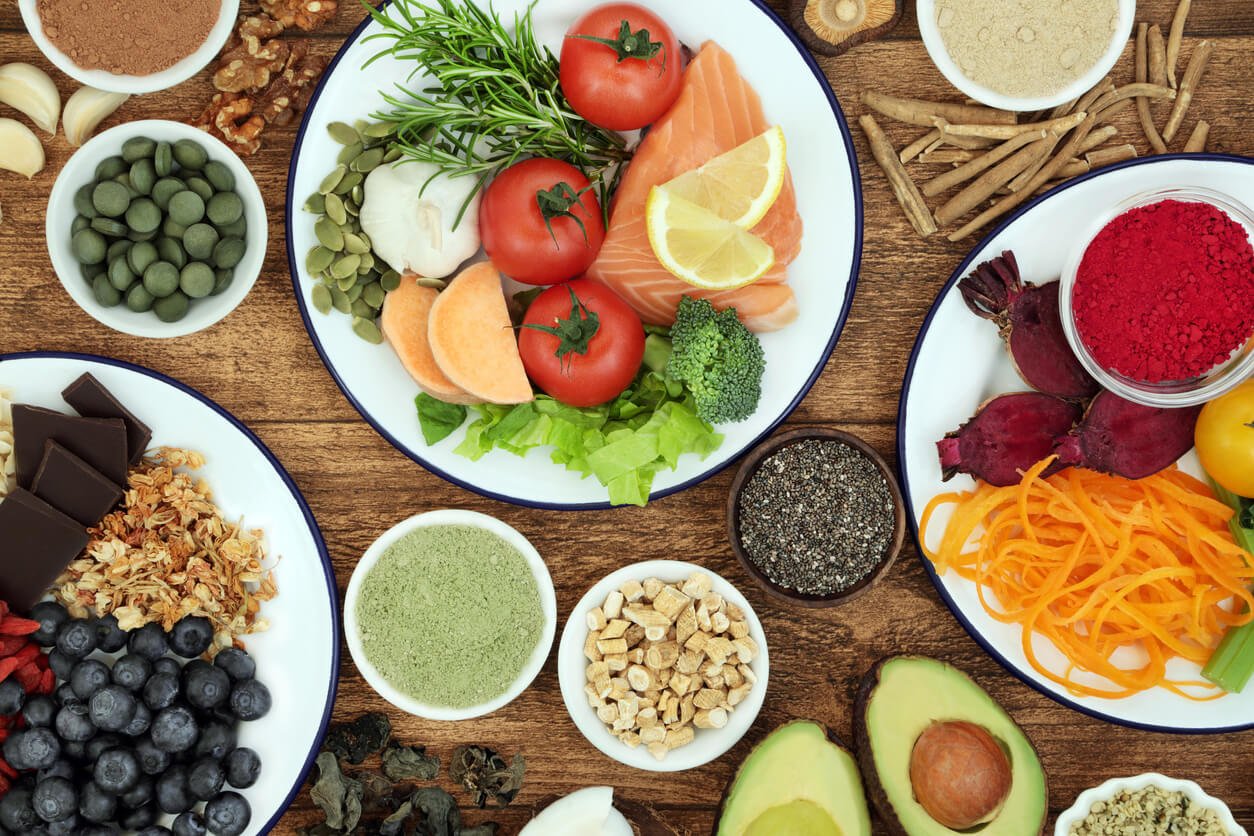
After recognizing all of the concerns about eating fish, probably the most important question is: What can you do about it?
One option, of course, is to reduce (or eliminate) your fish consumption altogether.
If you do choose to eat seafood, choose fish from one of the more sustainable and low-mercury options, such as wild salmon, sardines, anchovies, and herring—which are all uniquely high in omega-3 fatty acids and tend to be low in mercury.
You can buy only such wild-caught fish, or farm-raised fish that have been certified by third-party companies like BAP (Best Aquaculture Practices), ASC Pangasius, Naturland, Canada Organic, or the MSC (Marine Stewardship Council) to minimize contamination and ensure sustainability. Or take advantage of the Monterey Bay Aquarium’s Seafood Watch, which provides a guide to how responsibly certain types and origins of fish are produced.
And if the main reason you’re eating fish is for DHA and EPA, consider taking an algae-based DHA and EPA supplement instead. Pair this with a wide variety of fruits, vegetables, legumes, nuts, and seeds, and you can reap the benefits of these long-chain fatty acids without the risk of marine contaminants, the ethical problems associated with all forms of animal agriculture, and the environmental concerns raised by eating fish.
Tell us in the comments:
This article may stir some controversy. In the comments below, I encourage you to (respectfully) share your opinions and experiences. Robust dialogue can make us all wiser and healthier. Just please remember that most of the other people reading and engaging care about the planet, animals, and the well-being of future generations, like you do — even if they eat or think differently.
- What is your biggest takeaway from this article?
- Do you eat fish? Why or why not?
- Do you do anything special to ensure you are getting enough DHA and EPA?
Featured Image: iStock.com/Natissima

